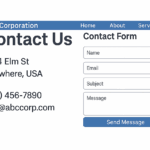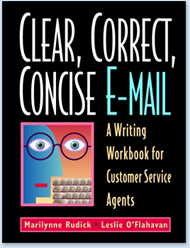And now, for one of the burning questions of our day: is website one word or two? Do you capitalize Web? Is it Internet or internet? E-Mail, e-mail, or email? The answer: all are correct, depending on the style you choose. While many absolute rules govern spelling and punctuation, much of style is governed by convention. Writers and editors choose whether a word will get a hyphen, a cap, or be followed by a comma. These conventions vary depending on the purpose of the document, the audience, and the organization.
What is Style?
Fiction writers think of style as the writer’s voice, his use of language. Designers think of style as the layout and format of a document. Editors think of style as the conventions for capitalization, punctuation, and usage: “Can I end a sentence with a preposition?”
But regardless of how style is defined, writers and editors care about style for the same purpose: to produce a readable document. In print documents, attending to style is an expected phase of the publication process. But in the online world, style considerations are often overlooked in the rush to post timely content. The result is the editorial equivalent of mismatched socks. A lot of online writing makes a poor impression.
You’re Going To Need A Style Manual
If your web pages are going to display a uniform style, you’ll have to define your style. You’ll have lots of questions to answer: How many levels of headings will appear on a page? How far will you indent bulleted lists? At your site, is website one word or two? And the writers at your site could probably use a little guidance on how to write for the web. They probably need some help with writing scannable text, advice about putting their message up front, and rules for writing hypertext links.
For readable web writing, you’re going to need a style guide. If your organization already has a style guide for its print publications, you can use it as a starting point and alter the guide so it addresses web writing. Familiarize yourself with these style bibles to learn about different schools of thought on language.
Style Guides for Print Documents
Book publishers tend to use The Chicago Manual of Style or Words Into Type as their bible. These manuals recommend using more punctuation rather than less. For example, they recommend the comma before the and in a list of three or more items. They advise writers to set off an introductory phrase with a comma. The AP Style Guide is the journalist’s Bible. It recommends sparse punctuation and favors lowercase rather than caps for important words: government, not Government; Middle Ages, not middle ages.
Academics rely on The Publication Manual of APA, or the MLA Style Guide. These manuals pay particular attention to formats for citing sources and for bibliographies.
Can a Classic Style Guide Work for Online Writing?
Which one to choose? The informal style of the web argues for the AP Style Guide. But style is a reflection of your image, your brand. An old-line company may be more comfortable with a more traditional approach to language. If you’re targeting graying CEO’s Chicago, or Words into Type may be a better fit.
The limit of these classics is that they are print style guides. A style guide for online writing must address specific issues: hypertext links instead of footnotes, the download time of tables and charts. How do we punctuate or spell the new words spawned by the cyber world?
Style Guides for Online Writing
Several style guides have grappled with the changes in online style and language. Published by Wired Magazine, Wired Style: Principles of English Usage in the Digital Age (Constance Hale) looks at how the digital revolution has changed literary style and editorial style. It’s taken a stab at codifying cyber speak by providing rules for web compounds and “e” prefixes.
EEI Press, a source of solid advice on print writing, weighed in on online language in E-What? A Guide to the Quirks of New Media Style and Usage. The guide makes sense of cyber speak, and provide rules that can be applied to words not yet invented. It will also offer up guidance on readability and good web writing.
APA has compiled its style guidelines for electronic resources into a downloadable guide (PDF): APA Style Guide for Electronic Resources. This short guide gives guidelines for citing electronic sources.
Even with these new guides, chances are you’ll still have to customize for your organization:
- Should you use a British English style to connect with your global audience?
- How will you present the words, phrases, or terms of art that apply only to your company or field? How will the name of your organization appear? When do you use your acronym?
- What are your boss’s style rules? Is he always Dr. Richards, never Bob? Does he hate sentences that start with however?
If developing your organization’s online style guide seems daunting, be encouraged. Read Part 2 of Is Website One Word? to learn about creating your own style guide. And until you read Part 2, keep the words of W.C. Fields in mind: “Anyone who can spell a word only one way is an idiot.”
In Part 1 of Is Website One Word? we discussed what we meant by editorial style and looked at the differences in existing style guides. We noted that even after choosing a published style guide as a primary reference, you’ll need to customize it for your organization. In Part 2, we’ll talk about how your editorial process will affect the type of style guide you need. We’ll point you to some resources to help simplify the job of building your guide.
After leafing through the Chicago Manual of Style or the Associated Press (AP) Style Book, you’re probably thinking that creating a style manual is a lot of work. Time to clean off your desk, answer spam, and track down your old college roommate.
But the task becomes manageable if you start by considering first, the scope of your style manual; and second, who will use it—experienced copy editors or everyone responsible for contributing content.
Determine the Scope Of Your Style Guide
What would you like your style guide to achieve? Are you just trying to clean up the copy—make sure capitalization and punctuation are consistent throughout the site? Or, do you want the guide to be broader, including overall website style (page format, rules for bulleted lists, heads)? Do you want to include web writing guidelines (for example, how to write hypertext links)?
Decide Who Will Be Using The Style Guide
Consider how you will handle editing for style. Will all text go to a central copy- editing group? If you are using experienced copy editors, familiar with style manuals, your task is simplified. Designate a published style guide as your primary reference (for example, Chicago, AP). Then put together an addendum that will cover where your style deviates from your chosen style guide and what’s not included in the style guide (information specific to your organization or your website).
If you have many people and departments contributing content, most likely all writers will be responsible for checking their content for style. In this situation, you’ll want a different type of style guide—something that’s quick and easy to use. These writers probably haven’t thought much about style and are not schooled in the finer points of punctuation and capitalization. They’re not inclined to consult a thick style guide at every comma.
For these writers, you’ll need to construct a style manual that covers the basics of style—general guidelines on punctuation, grammar and usage. (For example, “Use lower case except in these situations…”). Think Strunk and White’s Elements of Style, a concise overview of writing and style principles (100 pages), not the all-inclusive Chicago Manual of Style (900 pages).
Most useful is an online searchable guide that all content contributors can access quickly and easily. Customize your spell-check so that it will flag style inconsistencies—internet, if your style calls for Internet.
Appoint A Style Czar
Regardless of how you handle the editorial process, grant one person the final word on style. The style czar should solicit input from writers, editors, designers, and technicians to ensure that all style decisions are consistent with site and page design. But ultimately, one person should take responsibility for style. Someone is going to have to issue an edict about whether website IS one word (and is it capitalized?).
And since web style is changing, with new words, conventions, and technologies appearing every day, the style czar should also have responsibility for updating the guide.
Review Your Own (And Others’) Online Style
The best way to begin building your style guide is by reviewing the writing at your website. What style conventions are you following already? Print out some pages from your website and circle style conventions. What words or terms do you capitalize, abbreviate, or hyphenate? How do you punctuate items like phone and fax numbers? Do you almost always use e-mail, not email? Do writers consistently follow style conventions? (Probably not.) Begin constructing your organization’s style guide or addendum by creating a list of the style conventions that exist already at your site and label it Existing Style and another sheet labeled Style Decisions for the issues you need to resolve.
Before making your style decisions, study the sites of similar organizations, industries, or audience. Review sites you like. What are the style consistencies among these groups?
Choose Tools To Streamline The Editorial Process
You’re now ready to begin constructing your guide. Where can you go for help? Lana Castle has called upon her vast experience as an editor to put some method into what may seem like madness. Her book, Style Meister, The Quick Reference Custom Style Guide provides advice and worksheets to get the job done, including suggestions on constructing word lists. Castle says to use a two-column format, one column for your preferred word, such as disk; the second for words to avoid such as disc or diskette.
- Charts listing style options from which you can pick and choose.
- A model guide for specifying overall document style (font size, rules for lists and heads). Although designed for print, it can be easily adapted for websites.
Edit-work is a site devoted to web editing. It’s a source of invaluable guidance and tools, including:
- An online style glossary. Edit-work’s glossary is compiled from a variety of sources, including Chicago and AP style guides, the Gregg Reference Manual, and the Microsoft Manual of Style.
- A site style guide. Edit-work has posted the web style guide it used to develop the site. The guide includes rules for page formatting and specifications for links, fonts and heads. It’s a great model for compiling your own guide.
Will online editors ever agree about whether website is one word? Sure. Will editors ever be able to convince writers to follow the company style guide? Maybe. Until then, let’s remember to edit kindly and keep in mind the words of Plato, that famous web copywriter: “Criticism comes easier than craftsmanship.”







0 Comments